Pork Pochero is the ultimate comfort food! Chockful of tender pork belly, beans, smoky sausage, vegetables, and rich tomato sauce, this Filipino stew is hearty, flavorful, and perfect for cold weather.

Comments on my Facebook page inspired this recipe. I posted a recipe video for chicken pochero, and a few viewers mentioned that they use canned pork and beans instead of garbanzos and tomato sauce in their stew. Naturally, I was intrigued and had to try it.
Good thing I listened to suggestions because the puchero I made this afternoon following their tips was scrumptious! The pork and beans bulked up the stew and added a dimension of flavor garbanzo beans wouldn't have achieved.

Pochero (putsero), which means "stew pot" is one of the many Spanish-influenced dishes that has been adapted to suit Filipino tastes. Traditionally a peasant dish, it's composed of cuts of beef, chicken, pork, or fish, along with vegetables, root crops, and cured meats that are abundant in the area or in season.
A thick tomato-based sauce and a fruity sweetness from the addition of saba bananas usually characterize the Filipino version. It's a delicious and comforting dish, especially on cold rainy days.

Ingredient notes
- Pork-I like the melt-in-your-mouth tenderness of pork belly in this recipe but cuts such as pork shoulder or spare ribs are also good options.
- Potatoes and Carrots-you can swap the potatoes with kamote (sweet potatoes) or the carrots with turnips if you prefer.
- Pechay and Bagiuo Beans-this is a peasant stew; feel free to use other vegetables such as napa cabbage, bok choy, celery, or leeks.
- Saba Bananas- this tropical fruit adds a touch of sweetness which works well with the dish's savory flavors. Use ripe but very firm bananas for a touch of sweetness and the best texture.
- Chorizo de Bilbao- adds a smoky flavor to the dish. You can also use other cured meats such as bacon or ham bones.
- Canned Pork and Beans-this takes the place of garbanzo beans and tomato sauce.
Quick tips
- Cut up the ingredients in uniform sizes for even cooking.
- Pan-fry the potatoes, carrots, and saba bananas to help them keep shape and prevent them from falling apart when cooked in the sauce.
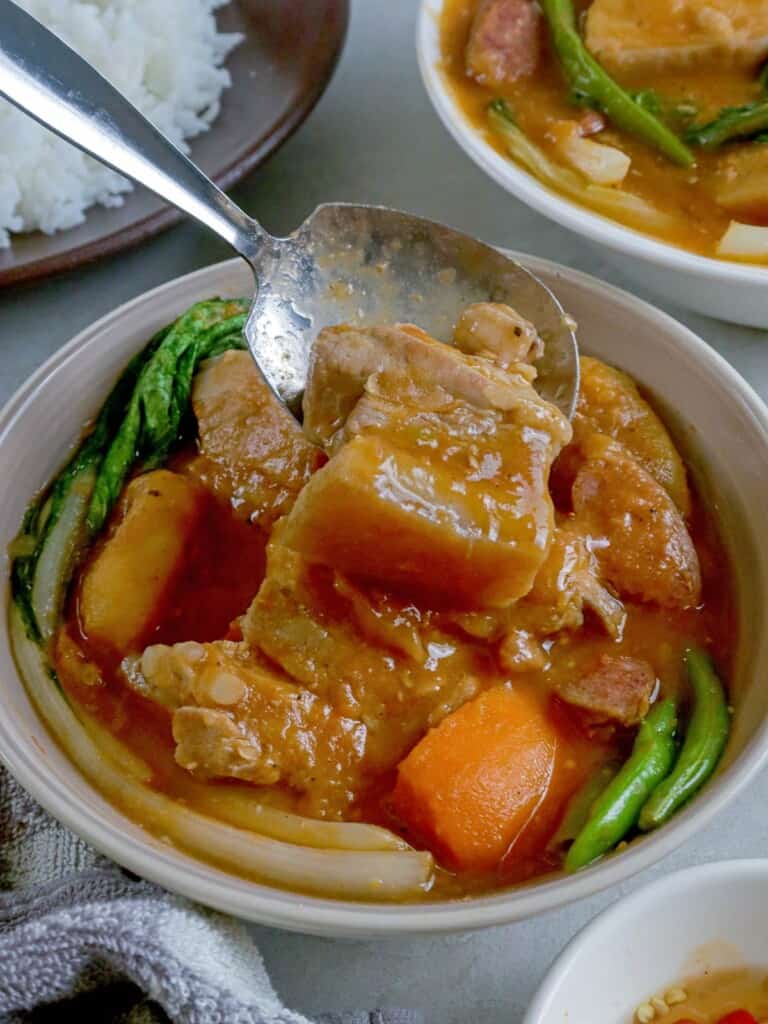
How to serve
- Pocherong baboy is traditionally served as a Sunday lunch or on special occasions for the whole family to gather around. Enjoy it with steamed rice or crusty bread loaf for a hearty, tasty meal.
- Store in a container with a tight-fitting lid and refrigerate for up to 3 days or freeze for up to 2 months.
- To reheat, place in a saucepan over medium heat and heat until the internal temperature reads 165 F.
More soup recipes
Ingredients
- canola oil
- 2 saba bananas, peeled and cut into chunks
- 2 medium potatoes, peeled and quartered
- 1 large carrot, peeled and cut into chunks
- 2 pieces Chorizo de bilbao, cut into chunks
- 1 onion, peeled and chopped
- 2 cloves garlic, peeled and minced
- 2 pounds pork belly, cut into 2-inch cubes
- 2 medium tomatoes, chopped
- 1 tablespoon fish sauce
- 4 cups water
- 1 can (15 ounces) pork and beans
- 2 bunches pechay, ends trimmed and leaves separated
- salt and pepper to taste
- 8 pieces green beans (Bagiuo beans), ends trimmed
Instructions
- In a deep pot over medium heat, heat about 2 tablespoons of oil. Add saba bananas and cook, turning as needed, until lightly browned. Remove from pan and drain on paper towels.
- Add potatoes and carrots and cook until lightly browned. Remove from pan and drain on paper towels.
- Add Chorizo de bilbao and cook until lightly browned. Remove from pan and drain on paper towels.
- Remove excess oil except for about 1 tablespoon. Add onions and garlic and cook until softened.
- Add pork belly and cook until lightly browned.
- Add tomatoes and cook, mashing with the back of a spoon, until softened and release juices.
- Add fish sauce and cook for about 1 to 2 minutes.
- Add water and bring to a boil, skimming scum that floats on top.
- Lower heat, cover and simmer for about 30 to 40 minutes or until meat is tender.
- Add pork and beans, potatoes, carrots, and Chorizo de bilbao. Continue to simmer until vegetables are tender.
- Add green beans and saba bananas and cook for about 2 to 3 minutes.
- Add pechay and cook for another minute.
- Season with salt and pepper to taste. Serve hot.
Notes
- Use ripe but very firm bananas for a touch of sweetness and the best texture.
- Cut up the ingredients in uniform sizes for even cooking.
- Pan-fry the potatoes, carrots, and saba bananas to help them keep and prevent them from falling apart when cooked in the sauce.
Video

Nutrition Information
“This website provides approximate nutrition information for convenience and as a courtesy only. Nutrition data is gathered primarily from the USDA Food Composition Database, whenever available, or otherwise other online calculators.”


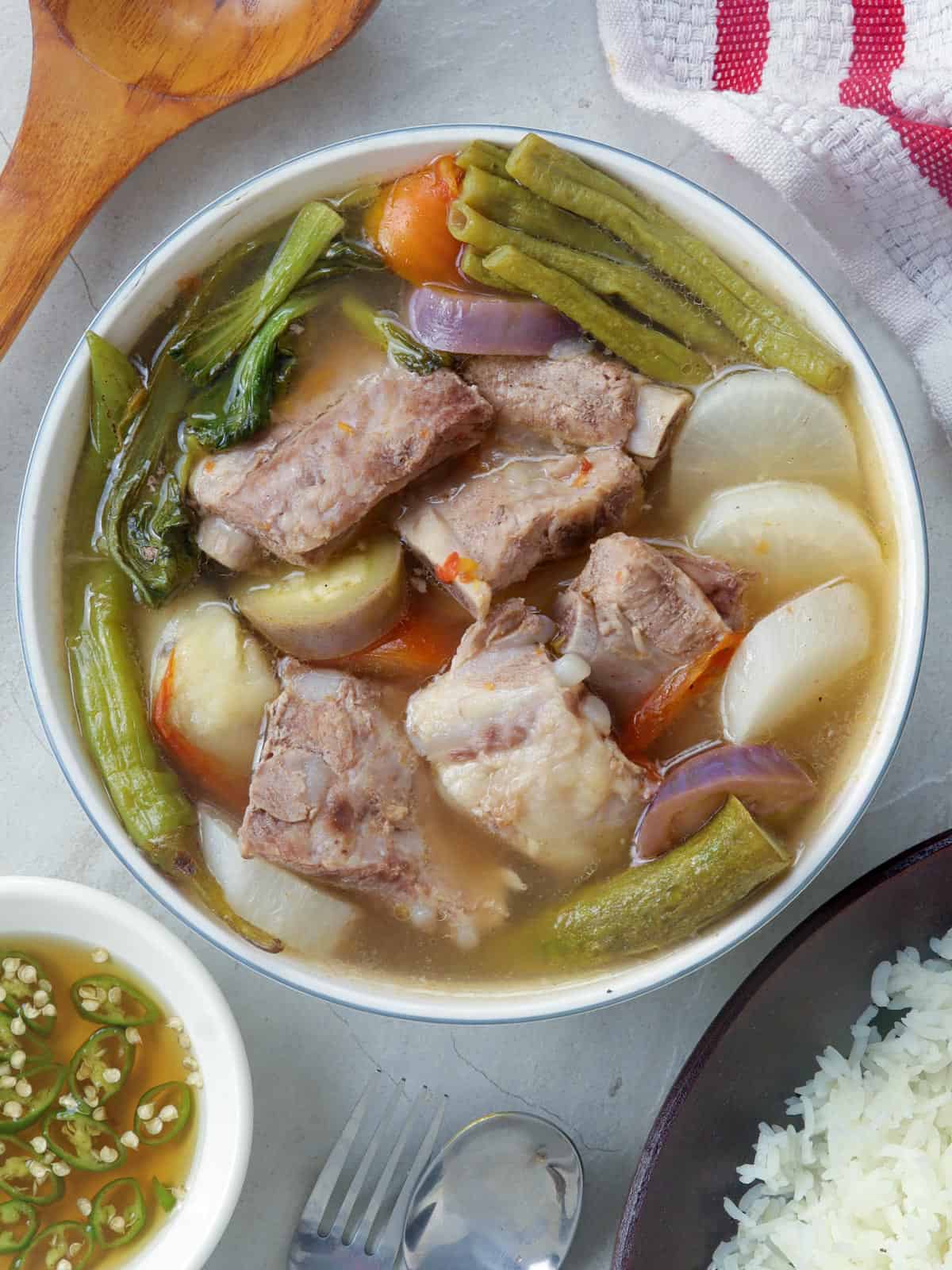
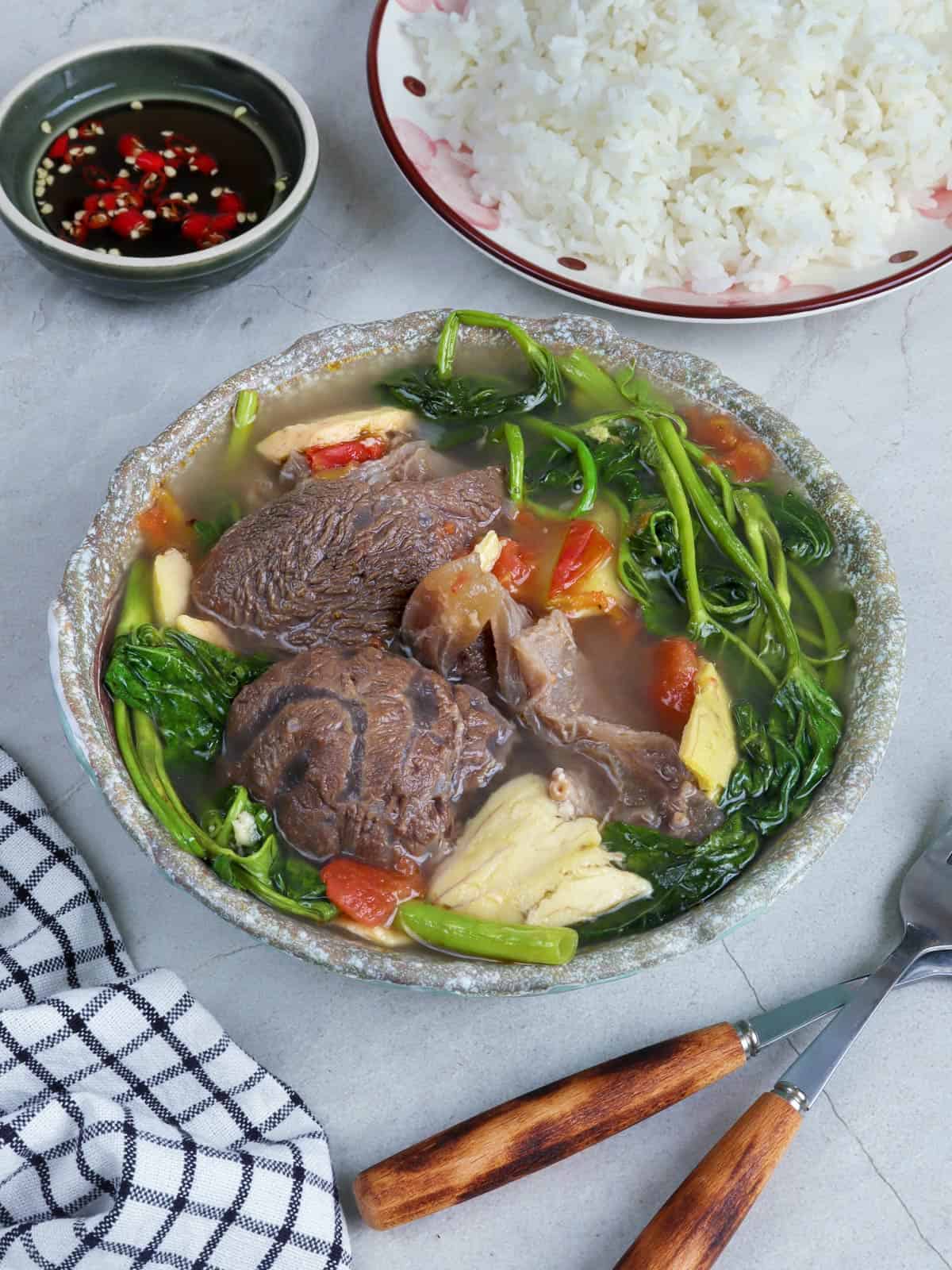
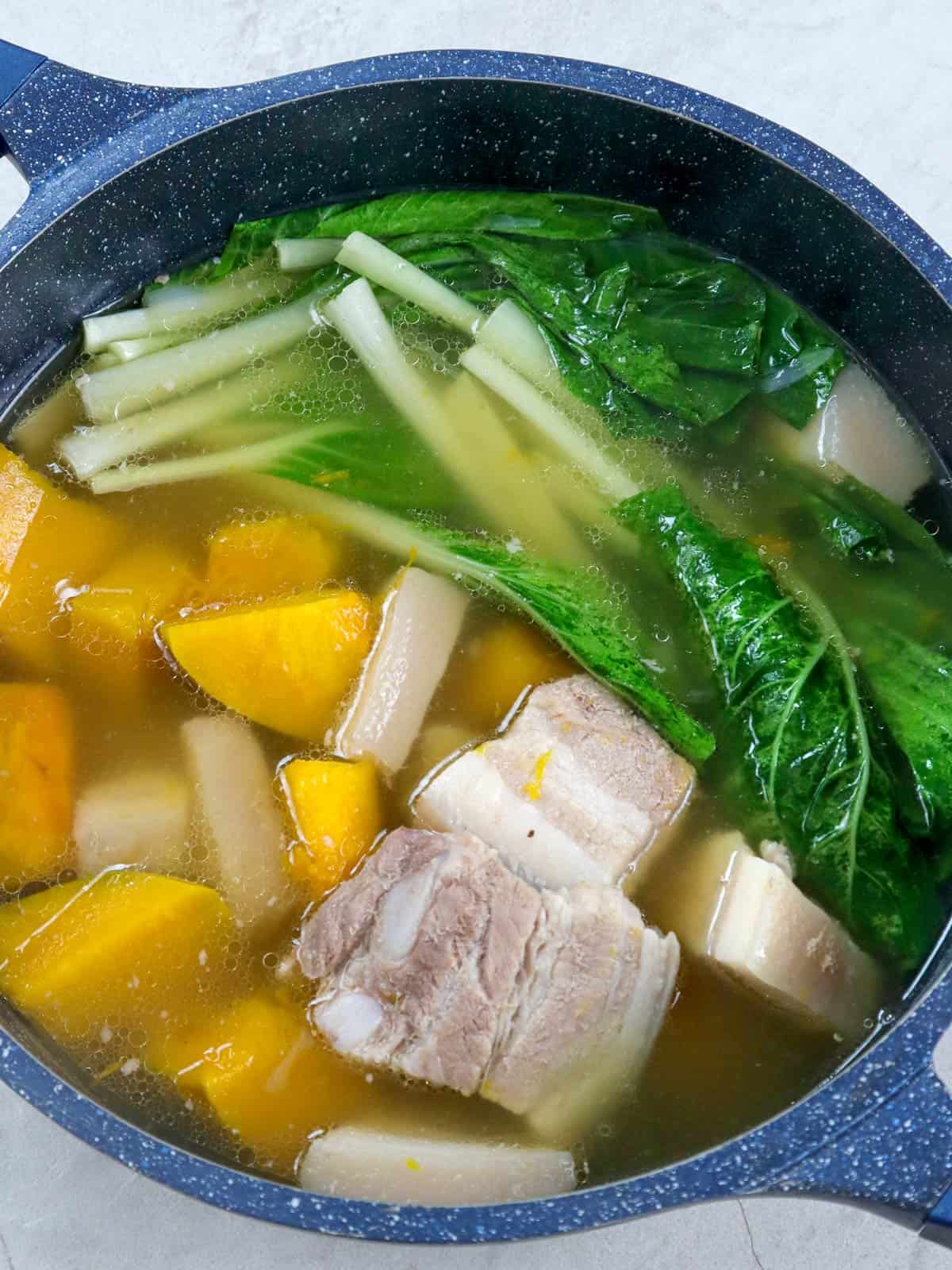

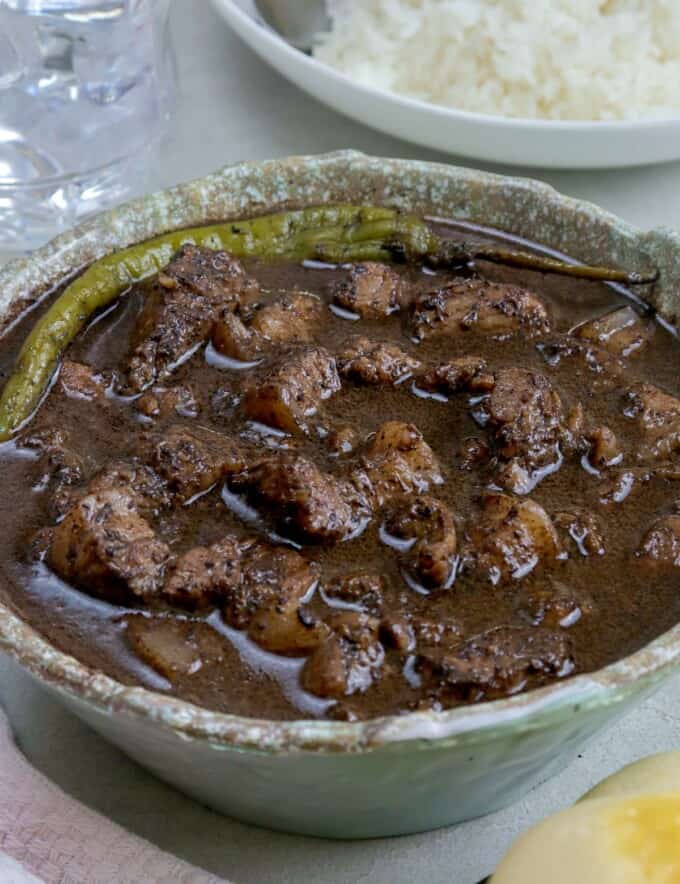
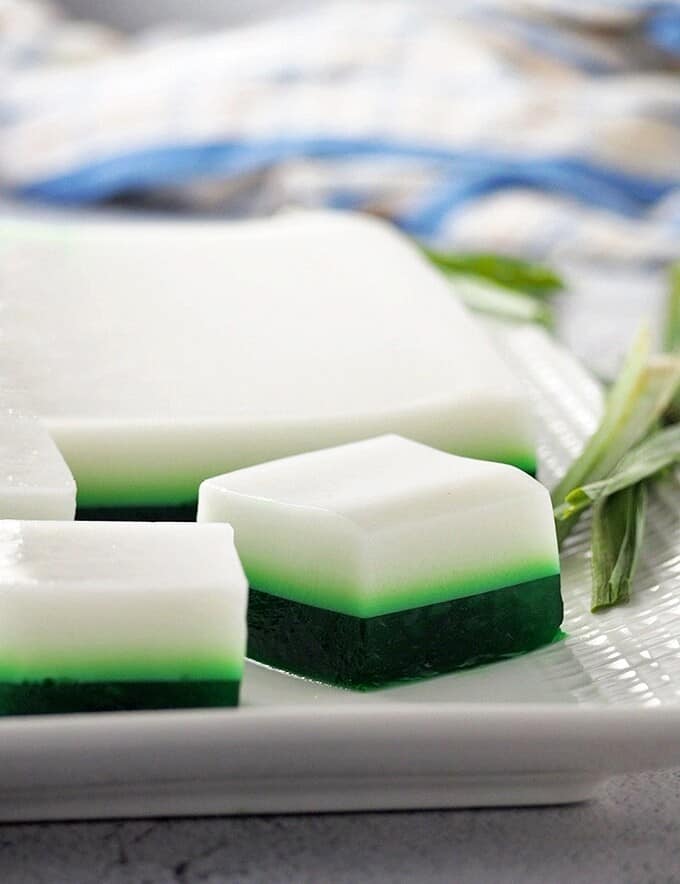
armando d. leonor jr says
thank you to pork pochero recipe
Imeeh Apple says
Thank you ms lalaine manalo. God bless your generous heart in imparting your knowledge and techniques in cooking. Lahat masarap and tunay na tunay ang galing ng pagluluto. My family and church mates, appreciate my dishes. Truly, God sent ka po. God bless you always 🙏 ❤️
Marlene says
Thank you for the recipes,my husband love your dinuguan recipe,
Axle says
Very informative and easy to follow recipe
Violeta says
The recipe was very good, and I enjoyed cooking it for my family, they loved it. I would make it again.
Violeta says
The recipe was very good, and I enjoyed cooking it for my family, they loved it.
Margie says
1 big can of pork & beans is 15 oz. Your recipe calls for 42 oz. So 3 big cans of pork & beans?
Erminia Wasden says
i love this 🙂
Karis says
Thank you for sharing the recipe! May I ask if I can omit the pork and beans (not a fan :P) or what I can substitute for it? Thank you!
Lalaine Manalo says
You don't like beans or just pork and beans? If you don't like beans in general, just omit it 🙂
Dave says
You can use garbanzos (chick peas). Actually, it should always be garbanzos. The pork and beans is rarely used on pochero.
Pour in as well a 8 ounce tomato sauce after sauting garlic, onions and tomatoes. Every pochero uses tomato sauce in addition to the tomatoes. The tomatoes alone will not give the pochero that nice red appearance.
Joel says
I like it that in your recipes you also mention the cut of meat to be use and alternatives, That is helpful for neophyte like me that is just learning how to cook and the type of meat to buy at the Market.
Lalaine Manalo says
I'm glad the recipes have been helpful 🙂
Lucy C. Fumar says
gusto ko matutu magluto po...
para sa pamilya ko
Jim says
Very good and big help for me and my family. Thanks.
Rolando says
Just learning for the moment. Thanks.
Lalaine Manalo says
🙂